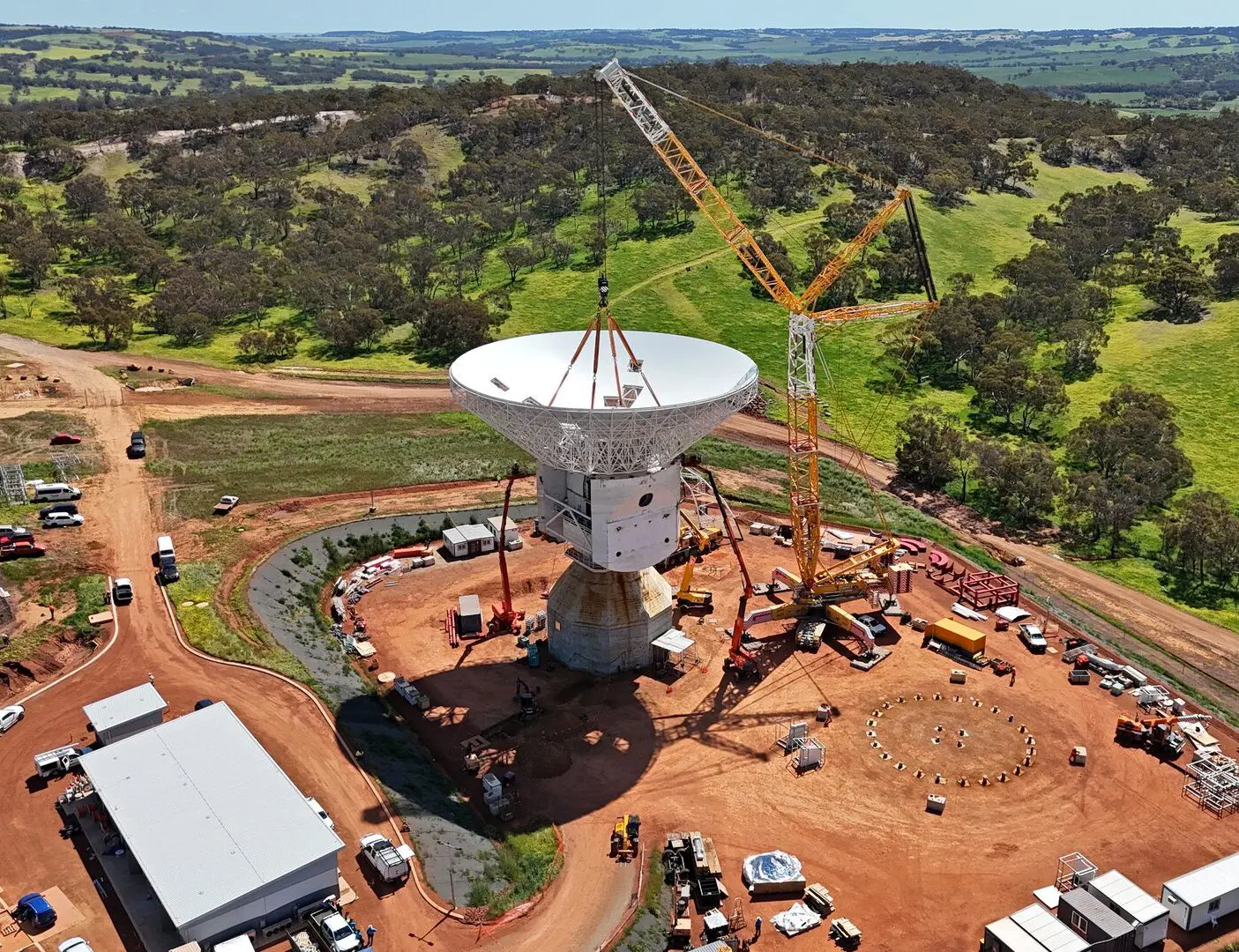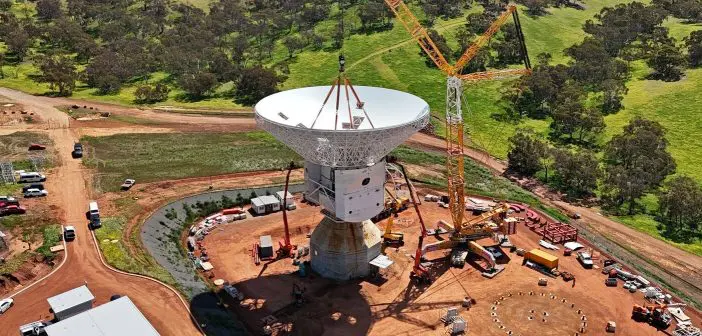
The European Space Agency (ESA) has crowned its deep space communication antenna under construction at New Norcia in Western Australia.
A 122-tonne, 35-metre diameter reflector dish was craned into place late last month and confirmed by the space agency last week. The lift required the use of a 750-tonne mobile crane brought in specially from Perth.
“With the dish and its quadrupole now installed, ESA is on track to inaugurate its fourth deep-space antenna, and second at the New Norcia site in Australia, by the end of 2025,” an ESA statement reads.
The New Norcia Ground Station (also known as NNO) is used for spacecraft communications. Known as NNO3, the new antenna will allow spacecraft to send data collected from onboard scientific instruments and receive flight instructions.
Prime-contractors Thales Alenia Space and Schwartz Hautmont Construcciones Metálicas are constructing the NNO3 antenna and associated works under an industrial contract led by ESA.
Opened in 2003, New Norcia was ESA’s first deep space ground station and already operates the 35-metre NNO-1 dish. The 4.5-metre NNO-2 dish acts as an acquisition aid for NNO-1 for fast-moving satellites and launch vehicles during their launch and early orbit stage. NNO3 will be the most technologically advanced of ESA’s deep space antennas.
The construction of NNO3 is in response to ESA’s growing capacity needs. Over the past few years, the demand for deep space ground stations has increased significantly. However, the capacity of the three existing deep space antennas in ESA’s global ground station network has nearly reached its limit. NNO3 will alleviate operational capacity demands for ESA missions in the coming years while also providing new capabilities for scientific missions.
Since laying the first stone in June 2022, the contractors have built the antenna tower and assembled the azimuth housing and counterweights.
“Reaching this critical milestone paves the way for the final stages of the project and further strengthens the team’s determination and motivation,” said NNO3 Project Manager Piermario Besso. “We will soon be able to start the deployment of the various subsystems inside the antenna that are required for the commissioning, testing and validation of the complete system and the deployment of a fully operational, state-of-the-art antenna.”
The project includes the extension of the site’s dedicated power plant facility, part of ongoing efforts to reduce ESA’s environmental impact.
Australia’s CSIRO has been ESA’s local partner for the operations and maintenance of its first deep space antenna on the site since 2019 and will be responsible for similar activities related to the new antenna.
When completed and online, NNO3 will feature cryo-cooled antenna feeds in X and Ka bands, an advanced technology that was recently deployed at ESA’s Cebreros and Malargüe antennas and which allows a significant data capacity increase (40 – 80% depending on the frequency band).
NNO3 is also designed to accommodate future upgrades, including a dedicated X-band transmission (80 kW) for emergency use cases and high data rate uplinks for lunar missions (22.55 – 23.15 GHz). It will also feature the next-generation ground station monitoring and control – common core system.





